A Wining Cost Estimate That Helps You To Win More Construction Projects
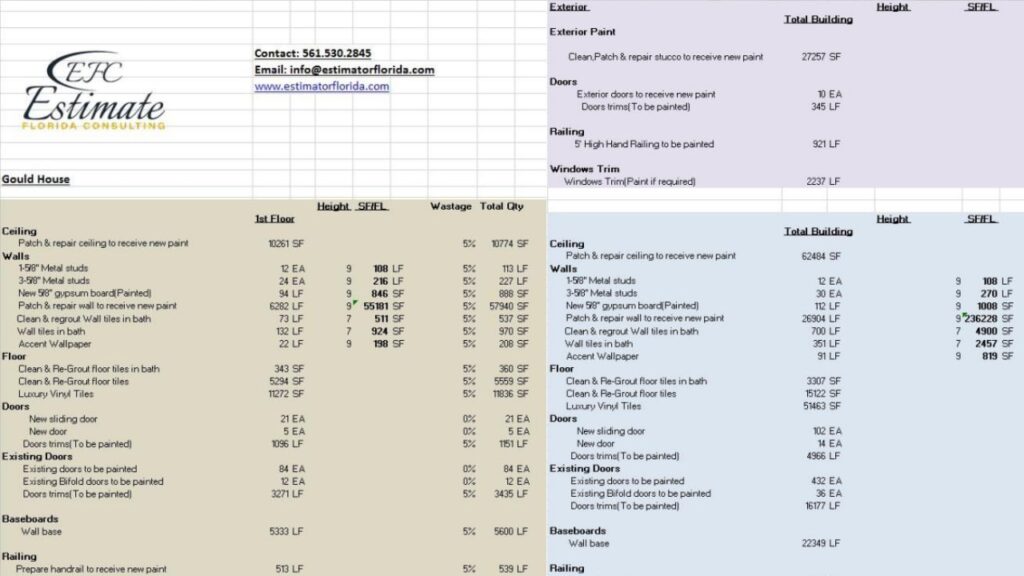
To avoid making mistakes when estimating construction costs, you need to understand the common errors in estimating construction costs. In order to estimate accurately, you need to consider multiple factors such as labor, material, and site conditions. This section titled “Common Mistakes in Estimating Construction Costs” with the sub-sections “Underestimating the Project Scope, Ignoring Site Conditions, Not Considering Labor and Material Costs, Overlooking Changes in Building Codes and Regulations, and Failing to Account for Contingencies and Overheads” will provide you with valuable insights into the mistakes to steer clear of when estimating construction costs.

Inaccurate Estimations of the Project Scope can lead to budget overruns and project delays, posing several challenges for stakeholders in the construction industry. This issue often arises due to inadequate information gathering or overlooking essential aspects of a project.
To avoid Underestimating the Project Scope, it is crucial to assess all areas that require construction and evaluate them independently. Failure to do so could result in missed details, such as insufficient excavation work, lack of required materials or a suboptimal workforce leading to incompletion. It is also important to consider external factors like weather conditions and site geography while estimating costs.
Construction Estimators need to thoroughly understand client requirements, blueprints, building codes and every aspect of the project scope to ensure accurate estimations.

With proper planning and careful consideration of all elements within your purview can prevent Underestimating the Project Scope.
While estimating costs for a project, it is pertinent not to overlook non-traditional expenses that may not be immediately apparent but will need attention down the line. Inaccurate cost estimation could harm business relationships with clients or investors, resulting in loss of future contracts or significant revenue.
One effective solution to combat this issue is regular stakeholder communication, double-checking calculations and systematically analyzing data from past projects for better insight into costing requirements. Adopting these strategies could help mitigate risk factors during estimation processes ultimately leading to successful completion of a project within budgetary constraints.
Never underestimate the power of Mother Nature – she can turn your construction project into a swimming pool faster than you can say ‘estimate’.

One major misstep that builders tend to overlook when estimating construction expenses involves ignoring the various site conditions. Site conditions can range from environmental factors such as terrain and soil composition to local zoning restrictions and utilities. Disregarding any of these elements could lead to significant cost overruns or delays in project completion.
Factor in all site conditions when estimating construction costs including zoning restrictions, soil composition, terrain, utility connections, and more. Failure to do so can lead to inaccurate cost forecasts and lengthy delays in completing projects. For instance, companies that don’t account for local government regulations may end up paying hefty fines or costs associated with redesigning their building plans.
It’s important to note that even minor alterations in site conditions can have significant effects on project timelines and expenses.

Overlooking these details can result in a cascade of problems ranging from labor shortages and schedule pushbacks to issues with permits and approvals. Forgetting any essential elements such as climate changes can also cause safety concerns like water leakage and accidents.
To ensure your project runs smoothly without breaking the bank or falling behind schedule, take time to thoroughly assess all relevant site conditions during the estimation process.
Avoid costly surprises by taking into account every conceivable factor that might come into play before beginning work on your construction project. Doing so will enable you to develop a realistic budget forecast so that you can effectively plan for everything down to the last detail.
Skipping labor and material costs in construction estimates? Might as well build a house of cards with invisible glue.
Cost estimation is a critical factor in construction project management. Among the common mistakes that can lead to inaccurate cost estimates, failing to account for direct and indirect costs is a significant one.
Direct costs are labor and material expenses necessary to complete the construction project. Indirect costs, on the other hand, are expenses not directly associated with the actual construction but have an impact on the workflow.
Construction managers need to ensure that all direct and indirect costs are taken into consideration when creating cost estimates. Without proper accounting of these costs, it may result in underestimation of expenses or overvaluation of profit margins.
Inaccurate cost estimation can be costly and could have significant implications for both the construction firm and clients. The failure to consider all potential costs may result in running out of resources halfway through projects, delays, poor quality workmanship or even complete project abandonment.

Therefore, it is imperative for companies to prioritize accurate cost estimation by factoring all possible direct and indirect expenses during planning processes. Doing so will help save time, avoid costly errors and provide client satisfaction through efficient budget planning.
You know there’s trouble brewing when the building codes change more often than your underwear.
Evaluating construction costs requires meticulous attention to details. Failure to grasp any of them can lead to significant changes that could escalate the project expenses significantly. One of the critical errors in estimating construction costs is disregarding modifications made in the building codes and regulations that apply today.
Building codes and regulations are frequently revised and updated, and failing to recognize these modifications can increase expenses on a project by several thousand dollars. Not knowing these updates means contractors would not only assume incorrect materials but also fail to estimate accurate labor requirements. In addition, contractors may have to demolish completed work if they are not up-to-date with the rules and regulations.
The inability to keep up with current standards while preparing cost estimation could lead to further complications such as stalling of the project, change orders, or even penalties. Clients may hold you accountable for unforeseen expenditures resulting from unfulfilled obligations on behalf of a contractor.
Remember, adhering to local government ordinances for building projects plays an essential role in ensuring safety and quality assurance during a venture’s entire process. Therefore, it is crucial when planning a construction project; every contractor should track all updates made in building codes and regulations.

In Texas, an entrepreneur tasked with re-purposing office buildings into apartments failed to account for accessibility rules relating housing units for persons with disabilities. This ignorance caused unnecessary expenses of approximately $100k – affecting profitability goals for the contract-winning company.
Don’t forget to include contingency plans in your construction budget. It’s like wearing a helmet – it may seem unnecessary until you really need it.
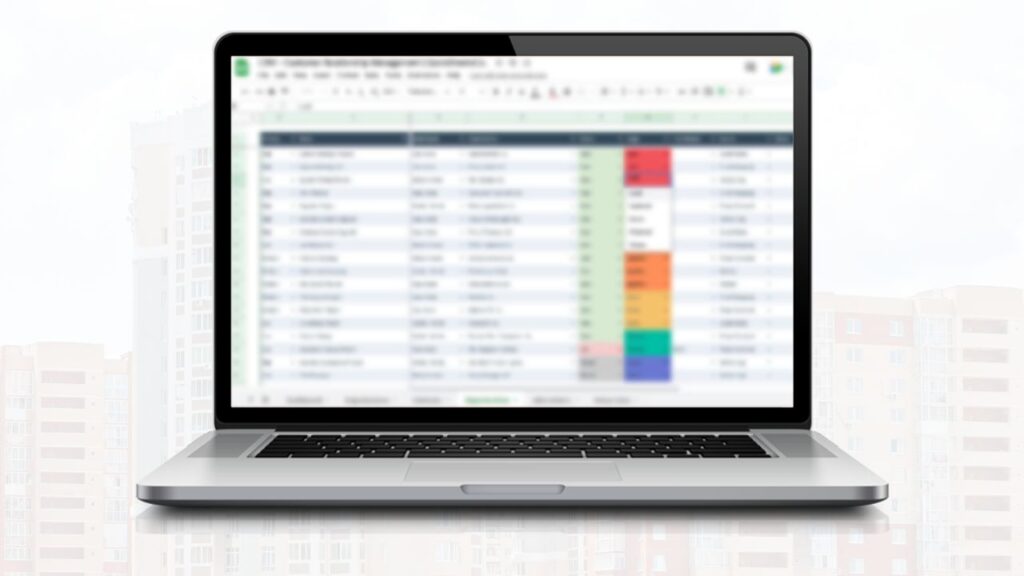
Accounting for Unexpected Expenses in Construction Cost Estimation
Construction projects often encounter unforeseen obstacles, and failing to account for contingencies and overhead expenses can cause significant financial strain in the long run. These expenses include but are not limited to unforeseen repairs, external factors that delay progress and inflation due to changes in market prices.
Contingencies reflect the risk of events that might arise during a project’s execution while overhead costs result from running a business. Not factoring in such expenses deprives one of the cushion against abrupt turns of events leading to incomplete projects.
To avoid these pitfalls, builders must carefully evaluate all potential risks and foreseeable estimates before building. With varied industry experience, we have seen time and again why it is crucial to incorporate contingencies into cost estimates both as a financially defensive measure and as an essentials business strategy.
By remembering to give attention to contingency costs in your construction project estimation, you can ensure that you can complete your construction project successfully without any financial fear of missing out. If you can’t estimate accurately, at least make your mistakes consistently inconsistent.
To avoid mistakes in cost estimation during construction, accurate analysis and evaluation is crucial. Relying on incomplete information, neglecting proper site analysis, underestimating time and resource requirements, failure to incorporate quality control measures, and ignoring market fluctuations and seasonal impacts are potential pitfalls to be aware of.
Depending on limited, incomplete or insufficient information can lead to inaccurate analysis and evaluation. Trusting data that is incomplete or based on a small sample size can result in biases and false conclusions that could impact decision-making processes. Incomplete information can also impede problem-solving capabilities, which can further hinder the accuracy of the analysis.

Therefore, it’s critical to approach any analysis with the understanding that complete data may not always be available. In such cases, relying on multiple sources of data could help mitigate these limitations by providing a more comprehensive view of the situation. This will lead to better-informed decisions based on a thorough review of all aspects rather than one-sided views.
Consider a major company that relied solely on its internal financial statements for decision-making. An external investor would have seen this incomplete picture as not taking into account market conditions or potential risks outside the organization. As a result, they might make investment decisions based only upon their partial perspectives leading to false conclusions about future growth prospects.
Skipping proper site analysis is like playing Russian Roulette with your construction project – the odds of a disaster are high and the consequences are deadly.
A lack of attention towards conducting a comprehensive analysis of the site can lead to inaccurate evaluations. Site analysis is a crucial step in determining key factors such as demographics, surrounding environment, access routes, and zoning regulations. Such analysis can help identify areas that require special consideration or improvement. A neglectful approach towards site analysis may cause oversights and eventually result in inefficiencies and complications during implementation.
When conducting proper site analysis, it’s crucial to consider historical data, demographic information, local regulations, environmental factors, and accessibility options. For instance, if the plan involves building a retail store in a residential area without sufficient parking space or considering community needs for certain facilities can lead to unintended consequences. Thus, an accurate evaluation is only possible if site inspections involve multiple stakeholders and utilize up-to-date data.
Accurate analyses must go beyond visual examination; they demand extensive qualitative research for identifying various opportunities and deficiencies of the site.
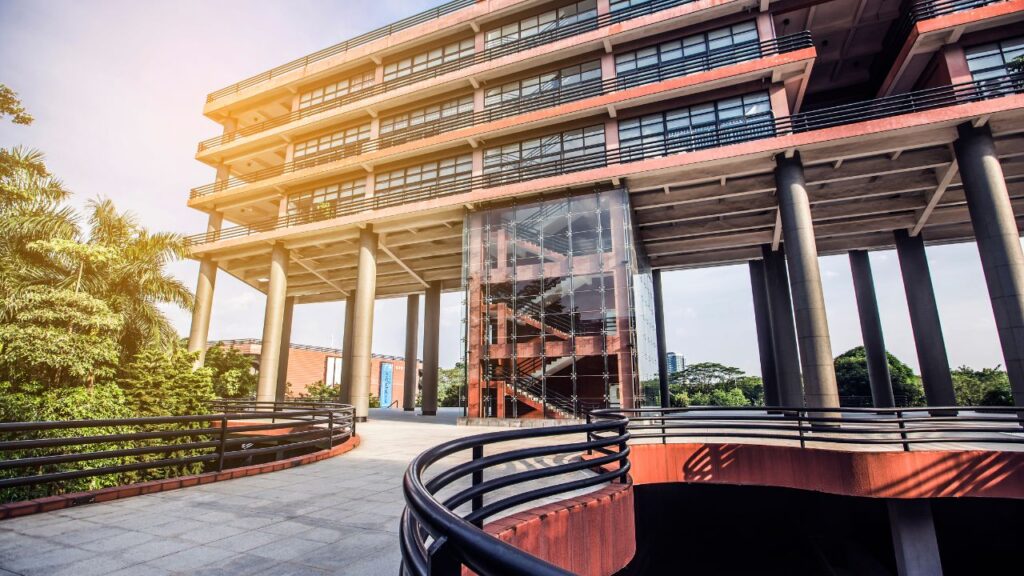
Parallel utilization of quantitative data will enhance effectivity throughout the project life cycle. Understanding issues upfront saves time and money spent on changes down the line.
Pro Tip: Comprehensive Site Analysis serves your proposals by giving insight into discovering unique variables that can shape your proposal’s success rate whilst reducing associated risks. Trying to estimate time and resource requirements is like trying to predict the weather in England – you might get lucky, but it’s usually just a shot in the dark.

Projects may fail because of underestimating time and resource requirements. The lack of proper analysis hinders the ability to allocate resources effectively. The resultant compounding issues lead to significant delays that increase costs for project completion.
Inappropriate calculations of time and materials required not only affect employee morale but also lead to misunderstandings between management, clients, and shareholders. Poor management systems that do not factor in varying complexities can interrupt schedules leading to stress in the workplace.

Understanding the scope and scale on a given project requires an accurate understanding of key variables, including personnel availability, length of each task, and cost estimates. It is crucial to include additional time buffers for unforeseeable setbacks or unexpected problems that arise throughout the execution phase.
It is a well-known fact that many software development projects are more extensive than initially anticipated – sudden problems could occur even during debugging and testing leading previously unaccounted for times needed for fixes. Understanding this type of nuances will help mitigate these hiccups thus advising cost overruns avoiding long-term damage to financial metrics for the organization at large.
Looks like they skipped the part about double-checking their work and went straight to the ‘wing it and hope for the best’ approach.
The absence of quality control measures has led to imprecise analysis and evaluation. Neglecting to incorporate these vital steps in data processing can potentially result in incorrect or incomplete results, eventually leading to faulty decisions. This further proves the necessity of prioritizing the implementation of quality controls.
Quality control measures ensure that the data being processed adheres to set standards and protocols. The inclusion of these measures guarantees that the analysis and evaluation process is performed with accuracy, completeness, and consistency. Its omission increases the probability of inaccuracies and inadequacies in final reports which can have serious consequences.
One must understand that incorporating such measures is not only a requirement but also a way for researchers to provide valuable insights and offer effective solutions. Not doing so implies overlooking potential errors as well as undermining research standards, impacting the credibility of any conclusions drawn from such analyses.
Consequently, it is essential for every organization or individual involved in data processing or research activities to employ strict quality control mechanisms to ensure thoroughness, precision, and reliability in expertise or decision making. Failing to do so jeopardizes valuable efforts directed towards achieving desired outcomes with profound implications.
The only thing more consistent than market fluctuations is ignoring them and hoping for the best.
When analyzing and evaluating market trends, it is critical to consider fluctuations and seasonal impacts thoroughly. Failure to do so can have severe consequences for a company’s performance in the short and long term.
Market fluctuations refer to the unpredictable changes in supply and demand, prices, or other economic variables that occur frequently. On the other hand, seasonal impacts refer to patterns associated with a particular time frame—for example, an increase in sales during Christmas or summer vacations.
Therefore, ignoring these aspects when conducting a business analysis can lead to inaccurate conclusions. For instance, a sudden rise in sales may not necessarily represent the overall market performance but rather be attributed to seasonal factors such as increased travel or holiday shopping.
Furthermore, companies that fail to account for market fluctuations may miss out on potential opportunities or suffer losses due to unforeseen changes. Understanding market variations allows investors and businesses to make informed decisions based on accurate estimations of demand and supply levels.
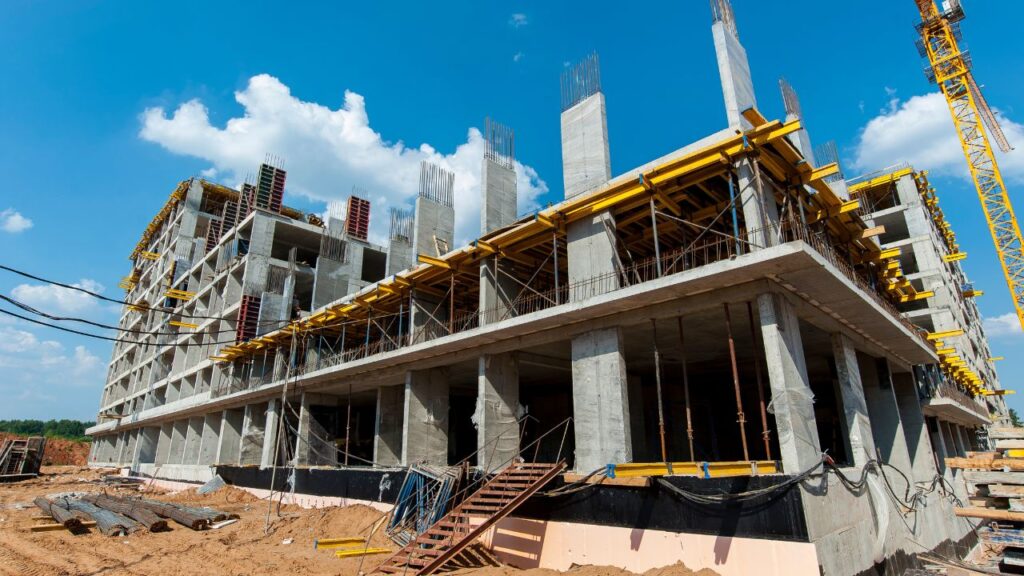
In recent years, many businesses learned this lesson the hard way, especially those heavily impacted by COVID-19 restrictions. The pandemic caused an unprecedented shift in consumer behavior that affected many industries worldwide. Companies with advanced capabilities of forecasting market fluctuations had better chances of survival than those that failed to adapt in time.
Estimating costs accurately is like playing darts blindfolded, except there’s no dartboard and the dart just ends up hitting your wallet.
Maximize your plumbing business’s potential with our competitive financing options

To avoid mistakes in cost estimation for construction projects, focus on obtaining accurate site information, incorporating quality materials and labor, examining industry trends and regulations, utilizing project management software and tools, and consulting professional construction cost estimators. These sub-sections offer solutions to common pitfalls in cost estimation that can make all the difference between a successful project and one plagued by overruns and delays.
Accumulating precise information about the project site plays a crucial role in effective cost estimation. It enhances the planning process by providing up-to-date information about the location and its surroundings. Along with site layout, topography, geology, access, existing infrastructure and legal restrictions are fundamental factors for accurate cost evaluation.
Moreover, These details will enable project managers to determine whether or not there is a need for supplemental studies and preparations. Detailed site assessments are vital in limiting costly changes that may arise during construction.

Pro Tip: Thoroughly assessing the project site is integral to formulating realistic costs and contingencies. It also results in efficient execution of plans, saving resources and time spent on excessive remodelling or rebuilding.
Using cheap materials and labor is like trying to build a castle out of toothpicks and gum – it’s not going to last and it’s going to leave a bad taste in your mouth.
The excellence of raw materials and skilled labor plays an important role in cost estimation. Using high-quality materials not only enhances the final product but also increases its durability, reducing future maintenance expenses. Professional labor is vital as it guarantees a project’s quality, finishing within the stipulated time frame, and avoiding any costly damage during construction.
When selecting products to use in a building project, one should focus not only on affordability but also on their durability, energy efficiency, and ecological sustainability. Investing in energy-efficient materials can reduce future power bills while contributing positively to the environment. Additionally, selecting locally sourced products reduces transportation costs and helps support local economies.
Incorporating qualified labor ensures the success of the construction project regarding skill level and expertise.
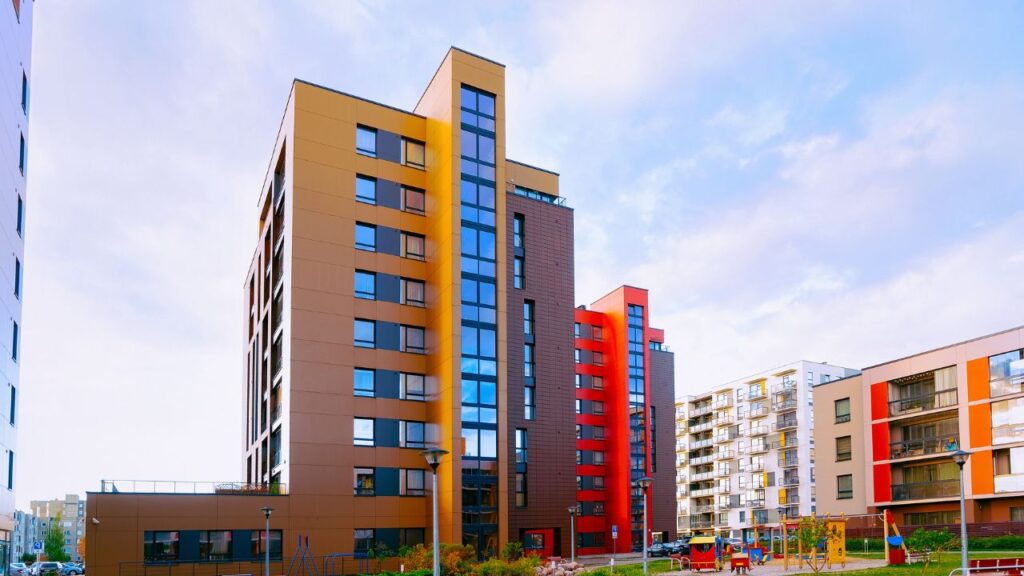
Unskilled workers create unnecessary waste, additional rebuilds, and damages incurred from their mistakes, ultimately leading to increased costs. It’s advisable to use trusted contractors with experience in handling similar projects previously.
According to a survey done by National Institute of Standards and Technology(NIST), on average 80% of projects overrun initially laid-out budgets; however, implementing proper practices such as utilizing quality materials and employing professional labor helps avoid this pitfall.
Just like fashion, industry trends come and go, but regulations stay in style forever.
The analysis of present-day patterns and regulations of a particular industry is crucial for the estimation of cost associated with any project. Proper examination helps in reducing errors while improving accuracy.
Industry standards are continuously evolving due to modern practices, including innovations like lean manufacturing. Compliance with these standards ensures better quality products without wastefulness. The government regulations ensure safe working environments and ethical business practices. Also, technological advancements such as automation have the potential to reduce costs through improved productivity.
Pro Tip: Keeping up-to-date with industry changes and adapting accordingly can play a significant role in avoiding errors during cost estimation.
Project management software is like a personal assistant, except they don’t complain about overtime and won’t steal your snacks from the break room fridge.
We help Residential & Commercial Contractors to win more projects with higher accuracy.

To ensure that the cost estimation process runs smoothly, modern project management software and tools are a necessity. With advanced technologies at the forefront of project management today, using them to your advantage can reduce errors and save time in the long run.
Here are five ways in which utilizing advanced project management technology can help you avoid mistakes in cost estimation:
By embracing these technological advancements, you can take control over cost estimations with precision and accuracy while minimizing errors.
In addition to advanced project management technology, there are other strategies you can utilize to avoid mistakes in cost estimation. These include setting realistic expectations, communicating with stakeholders regularly, conducting thorough research before starting the project, and developing contingency plans for unexpected costs.
For best results, incorporate these tactics into your project management methodologies when estimating costs.

Avoiding mistakes during the cost estimation process is crucial for any successful project implementation. Utilize cutting-edge software solutions for streamlined processes and efficient collaboration among teams to achieve better outcomes. Remember: neglecting to leverage this critical technology could result in missed opportunities down the line.
Consulting a cost estimator is like hiring a therapist for your budget – they’ll help you avoid costly breakdowns.
Avoiding mistakes during the cost estimation process is crucial for any successful project implementation. Utilize cutting-edge software solutions for streamlined processes and efficient collaboration among teams to achieve better outcomes. Remember: neglecting to leverage this critical technology could result in missed opportunities down the line.
Consulting a cost estimator is like hiring a therapist for your budget – they’ll help you avoid costly breakdowns.

Cost estimation is a crucial part of any construction project that requires professional assistance. Consulting with experienced construction cost estimators can eliminate errors, ensures accuracy, and save time in the process.
Below is a table showcasing some of the benefits of consulting with professional construction cost estimators:
Benefits | Details |
|---|---|
Cost Accuracy | Professional cost estimators provide precise cost estimates based on in-depth analysis. |
Cost Optimization | They help to identify and optimize project costs, saving money while maintaining top quality. |
Time Optimization | Professional cost estimators provide swift and effective services, ensuring timely delivery. |
Compliance with Industry Standards | Professional estimators adhere to industry standards, ensuring accurate and reliable results. |

In addition to these essential details, consulting professional construction cost estimators ensures flexibility and adaptability at every stage of the project’s lifecycle.
To optimize the benefits mentioned above when consulting cost estimators, it’s necessary to:
Following these suggestions will help unburden your mind from costly mistakes common in most construction projects leading to more successful results in terms of finances and timelines.
It’s important to carefully review the project plans and ensure that all materials are accounted for. You can also consult with suppliers to ensure that you have accurate prices and quantities for each item.
You may encounter unexpected expenses related to site preparation, environmental regulations, and changes to the project plans or materials. You should always have a contingency plan in place for any unforeseen expenses.
You should research the specific permit and inspection requirements for your project and include these costs in your estimate. You may also want to consult with local authorities to ensure that you have accurate and up-to-date information.
Thorough site reviews can help you identify any potential issues that may impact your estimate. This includes things like soil conditions, accessibility, and existing structures or obstacles.
Here I am going to share some steps to get your construction cost estimate report.
You can send us your plan on info@estimatorflorida.com
Before starting your project, we send you a quote for your service. That quote will have detailed information about your project. Here you will get information about the size, difficulty, complexity and bid date when determining pricing.
We do construction cost estimating and prepare a detailed report for your project. At last you finalize the report and finish the project.
561-530-2845
info@estimatorflorida.com
Address
5245 Wiles Rd Apt 3-102 St. Pete Beach, FL 33073 United States
561-530-2845
info@estimatorflorida.com
Address
5245 Wiles Rd Apt 3-102 St. Pete Beach, FL 33073 United States
All copyright © Reserved | Designed By V Marketing Media | Disclaimer
IMPORTANT: Make sure the email and cell phone number you enter are correct. We will email and text you a link to get started.
By clicking “I Agree” above you give Estimate Florida Consultin express written consent to deliver or cause to be delivered calls and messages to you by email, telephone, pre-recorded message, autodialer, and text. Message and data rates may apply. You are able to opt-out at any time. You can text STOP to cancel future text messages.